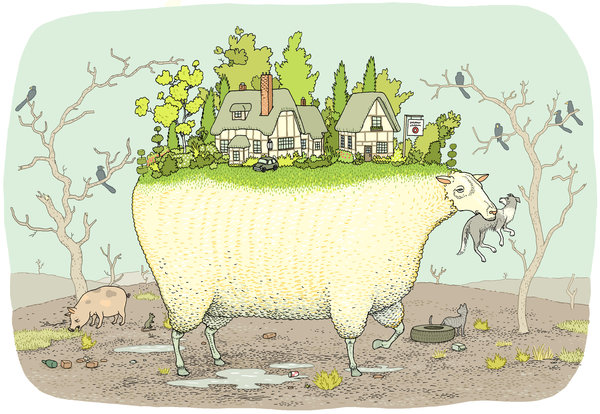
From reef dredging, to shark culling, to opening old-growth forests to logging, environmental policies are leaving Australia’s wildlife exposed to threats. The reason, we propose, is that society and government are often ignoring science – particularly ecology.
In a recently published book, more than 80 Australian environment professionals looked at what we have learned from studying ecosystems.
This book is based on long-term field research in numerous ecosystems. From this research, there are examples of science both being used and ignored in management and policy.
There is some good news. Forest studies have led to more sustainable forestry in Tasmania, and potentially soon in Victoria. And new restoration techniques are being trialed to protect endangered woodlands in the Australian Capital Territory.
But there’s still a long way to go. Here are three examples where science is seemingly being ignored by current environmental policy.
Alpine grazing
Under a trial approved by the federal government, cattle are now once again grazing in the Alpine National Park.
There is no scientific case for the trial. Since the 1940s scientists have been monitoring the alpine ecosystems.
For instance we know that hard-hooved animals such as cattle, sheep, horses, deer and pigs have significant negative impacts. These include changes to species composition, ecosystem dynamics, and fewer herbs such as Billy Buttons and Snow-daisies.
These studies also clearly demonstrate that grazing by domestic livestock does not reduce the frequency or severity of fire in the Australian alps, and can actually increase the risk of fire, as grazing encourages growth of flammable shrubs.
As a consequence of these studies, grazing of sheep and cattle had been phased out of most alpine areas. It poses a clear threat to the alpine ecosystem and natural heritage values of Alpine National Park, and we know that when grazing stops, the alpine ecosystems recover — albeit slowly, and future recovery is unlikely to be as robust as past recovery because environmental conditions are changing.

Culling fruit bats
Queensland and New South Wales are currently culling fruit bats, despite evidence that culls do not reduce health risks or work.
The threatened spectacled flying fox (Pteropus conspicillatus), targeted as part of the culls, also falls under conservation regulations and provides free services for human society, such as dispersal of pollen and seeds. But many humans fear them because of Hendra virus, and dislike them because urban camps are smelly and noisy, and because they damage commercial fruit crops.

Regular calls are made for their conservation status to be downgraded and for management interventions such as camp removal and culling to be adopted. But a ten-year study that we referred to of the habits of spectacled flying foxes demonstrates that apparently simple solutions like moving or destroying camps will ultimately fail because the species is nomadic — naive individuals are always arriving at camps meaning that camps easily re-establish at the site or nearby.
The often repeated claims that flying-fox populations are exploding are also not supported by the research.
Forest management
Recently Prime Minister Tony Abbott suggested that too much forest is locked away from logging and blames “green ideology” for this. We don’t need ideology driving decision making about forest management but more science would be good.
Research on the effects of the 2009 Black Saturday fires in Victoria shows that a decline in hollow bearing trees, which is leading to declines in some fauna, has been linked to these high severity fires and a long history of timber harvesting. On the basis of this research, as well as economic factors, there is a public campaign to change this area’s land tenure from State Forest to National Park.
Professor David Lindenmayer proposes a Giant Forest National Park
However this research is specific to forests in Victoria, and the story may be different in other forest systems. Each system in question needs independent research.
How do we get more science in policy?
Environmental scientists, researchers and policy-makers have a “social imperative” to increase scientific knowledge in policy. Alongside our work on ecosystems, we developed a policy handbook to guide policy makers. And we encourage more ecologists, and their institutions, to distill and communicate their science in similar ways.
It’s not too late, but scientist and policy-makers need to work together and act with the urgency, scale and intelligence needed to meet our environmental challenges.
The book and policy handbook referred to in this article were supported by the Terrestrial Ecosystem Research Network. TERN has catalysed collaborations between researchers dedicated to ecological research but who would have been unlikely to work together without support from TERN.
Source: http://theconversation.com/why-is-our-wildlife-in-trouble-because-were-ignoring-science-27226








 Their study, published online on November 14 in the journal Science, documents the new database, including a number of key findings on global forest change. For example, the tropics were the only climate domain to exhibit a trend, with forest loss increasing by 2,101 square kilometers (811 square miles) per year. Brazil’s well-documented reduction in deforestation during the last decade was more than offset by increasing forest loss in Indonesia, Malaysia, Paraguay, Bolivia, Zambia, Angola and elsewhere.
Their study, published online on November 14 in the journal Science, documents the new database, including a number of key findings on global forest change. For example, the tropics were the only climate domain to exhibit a trend, with forest loss increasing by 2,101 square kilometers (811 square miles) per year. Brazil’s well-documented reduction in deforestation during the last decade was more than offset by increasing forest loss in Indonesia, Malaysia, Paraguay, Bolivia, Zambia, Angola and elsewhere.






.jpg)